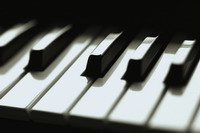Piano Sheets > Jerry Herman Sheet Music > It Only Takes A Moment (ver. 1) Piano Sheet
It Only Takes A Moment (ver. 1) by Jerry Herman - Piano Sheets and Free Sheet Music

About the Song
Other avaliable versions of this music sheet: Version 1 Version 2
How to search for the best free sheet music on the internet If you would love to learn how to play the piano but do not have the funds to afford expensive lessons then sheet music can help you. There are plenty of websites online, which provide you with free sheet music. You can play classic compositions using such sheet music free piano.
Different styles
You can search online to find free sheet music for piano. There are sites, which provide many different kinds of genres of music and the piano notes for such compositions. Whether it is rock and roll, pop, rhythm and blues, classics or some other genre, you are sure to find the appropriate musical notes for these compositions.
(More...)
Download this sheet!
About the Artist

Random article
How to search for the best free sheet music on the internet If you would love to learn how to play the piano but do not have the funds to afford expensive lessons then sheet music can help you. There are plenty of websites online, which provide you with free sheet music. You can play classic compositions using such sheet music free piano.
Different styles
You can search online to find free sheet music for piano. There are sites, which provide many different kinds of genres of music and the piano notes for such compositions. Whether it is rock and roll, pop, rhythm and blues, classics or some other genre, you are sure to find the appropriate musical notes for these compositions.
(More...)
